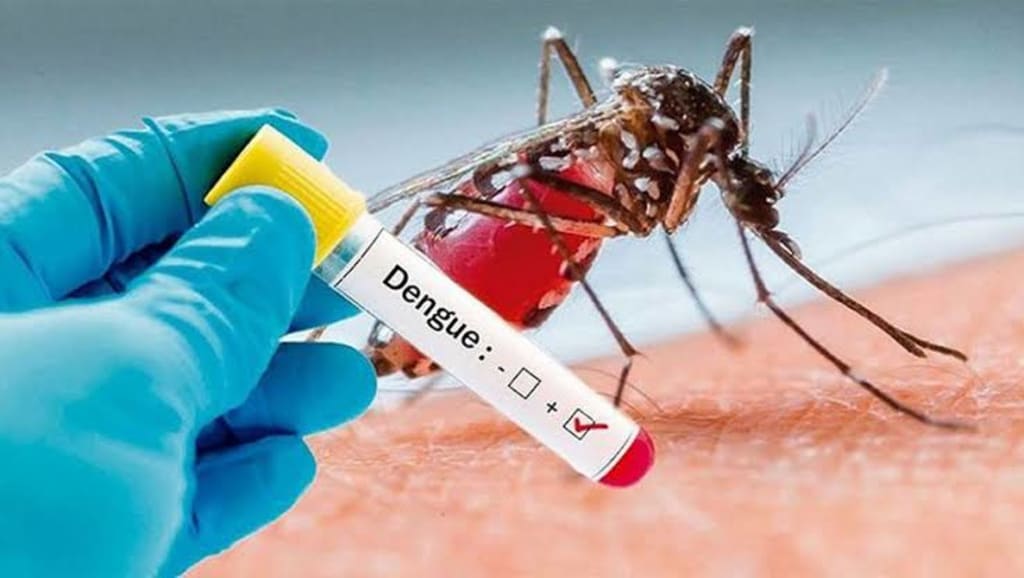Dengue Fever: A Growing Global Concern
Dengue Fever: A Growing Global Health Challenge in 2023

Dengue fever, a mosquito-borne viral infection, has emerged as a major public health concern in recent years, affecting millions of people worldwide. This disease has garnered increased attention due to its rising incidence, the potential for severe and life-threatening outcomes, and the challenges associated with its prevention and control. In this comprehensive exploration, we will delve into the various aspects of dengue fever, shedding light on why it has become a new concern for the world.
The Dengue Virus and Its Transmission
Dengue fever is caused by the dengue virus, which belongs to the Flavivirus family. There are four distinct serotypes of the dengue virus, creatively named DENV-1, DENV-2, DENV-3, and DENV-4. Each serotype can cause the disease, and individuals who recover from one serotype are not necessarily immune to the others. This feature makes dengue a challenging disease to control and manage.
The primary mode of transmission of the dengue virus is through the bite of infected female Aedes mosquitoes, with Aedes aegypti being the principal vector. These mosquitoes are known for their daytime feeding habits, which can catch people off guard as they often associate mosquito bites with nighttime. The Aedes mosquito breeds in stagnant water, and urban areas with inadequate sanitation and water management systems are particularly vulnerable to mosquito proliferation.
Global Prevalence and Incidence
Dengue is endemic in many tropical and subtropical regions of the world. Countries in Southeast Asia, the Pacific Islands, the Caribbean, and parts of Central and South America are particularly affected. However, in recent years, there has been a significant increase in the global incidence of dengue, causing concern among public health authorities and researchers.
Several factors contribute to the rising incidence of dengue:
1. Urbanization: Rapid urbanization in many developing countries has created densely populated areas with inadequate housing and sanitation. These urban environments provide ideal breeding grounds for Aedes mosquitoes.
2. Population Growth: The global population continues to expand, increasing the number of people at risk of dengue infection.
3. Increased Travel: People travel more extensively today than in the past, which means that the virus can be carried by infected individuals from one region to another, potentially causing outbreaks in areas where dengue was previously rare.
4. Climate Change: Climate change has a profound impact on the distribution of Aedes mosquitoes. Higher temperatures and altered rainfall patterns can expand the geographic range of these mosquitoes, making dengue a concern in regions previously unaffected.
Health Impacts and Disease Severity
Dengue fever can manifest in various forms, from mild flu-like symptoms to severe and life-threatening conditions. The typical symptoms of dengue include high fever, severe headaches, joint and muscle pain, rash, and bleeding tendencies. This milder form of the disease is known as dengue fever.
However, severe forms of dengue can develop, posing a significant threat to affected individuals. These severe forms include dengue hemorrhagic fever (DHF) and dengue shock syndrome (DSS). DHF is characterized by bleeding, plasma leakage, and organ impairment, while DSS involves a rapid drop in blood pressure, leading to shock. Without prompt and appropriate medical care, severe dengue can result in organ failure and death.
Challenges in Diagnosis and Treatment
Diagnosing dengue can be challenging, especially in regions with limited healthcare infrastructure. Early and accurate diagnosis is crucial for effective management and to prevent the progression to severe disease. Several diagnostic tests, including polymerase chain reaction (PCR) assays and serological tests, can confirm dengue infection.
Unfortunately, there is no specific antiviral treatment for dengue. Supportive care, such as hydration and pain relief, is the mainstay of treatment. However, managing severe cases can be complex, particularly in resource-constrained settings. Patients with severe dengue often require intensive medical care, including blood transfusions and careful monitoring of vital signs.
Vaccine Development and Challenges
Efforts to develop a dengue vaccine have been ongoing for several years. The first dengue vaccine, Dengvaxia (CYD-TDV), developed by Sanofi Pasteur, was licensed in some countries but faced challenges regarding its efficacy and safety. Dengvaxia was found to provide varying levels of protection against different dengue serotypes and posed a risk of severe dengue in individuals not previously exposed to the virus.
Subsequently, other vaccine candidates have been developed and are under evaluation. These vaccines aim to provide more balanced protection against all four dengue serotypes. Vaccine development for dengue is a complex process due to the need to create immunity against all serotypes while avoiding potential complications like antibody-dependent enhancement (ADE), which can worsen the disease in some cases.
Vector Control as a Preventive Measure
Given the absence of a universally effective vaccine, vector control remains a crucial strategy in dengue prevention. This involves measures to reduce the Aedes mosquito population and limit their ability to transmit the virus. Key components of vector control include:
1. Eliminating Breeding Sites: Communities are encouraged to remove or treat stagnant water sources where mosquitoes breed. Simple actions like covering water storage containers and cleaning clogged drains can make a significant difference.
2. Insecticides: The use of insecticides to target adult mosquitoes and larvicides to control larvae is a common practice in dengue-endemic areas.
3. Community-Based Efforts: Engaging communities in mosquito control programs, education campaigns, and community clean-up efforts can help reduce mosquito breeding sites.
Travel-Related Cases and Global Spread
The interconnectedness of the modern world has led to an increase in travel-related cases of dengue. People who visit dengue-endemic regions can become infected and, upon returning home, potentially introduce the virus to areas where it was previously absent. This has led to sporadic outbreaks in non-endemic regions, making dengue a global concern.
Efforts to mitigate this risk include raising awareness among travelers, encouraging protective measures such as mosquito repellent use and wearing long-sleeved clothing, and monitoring and responding to potential outbreaks in non-endemic areas.
Co-Infections and Emerging Challenges
Dengue can sometimes co-occur with other mosquito-borne diseases like Zika and chikungunya, creating additional challenges for healthcare systems. These co-infections can lead to more severe clinical manifestations and complicate diagnosis and treatment.
Moreover, as global travel and trade continue to expand, the potential for new outbreaks and the introduction of different dengue serotypes into new regions remains a concern. This underscores the importance of robust surveillance systems and prompt outbreak responses to contain the spread of the virus.
Research, Surveillance, and the Way Forward
Addressing the growing concern of dengue requires a multifaceted approach. Ongoing research into various aspects of the disease, including virus transmission, vector control strategies, diagnostics, and vaccine development, is essential. Researchers are working to better understand the complex interactions between the virus, the mosquito vector, and the human host.
Surveillance systems play a critical role in monitoring dengue outbreaks and providing early warning of potential epidemics. Improved surveillance can help public health authorities implement timely interventions to prevent the spread of the virus.





Comments
There are no comments for this story
Be the first to respond and start the conversation.